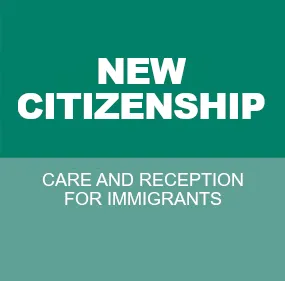
A plan containing 37 actions designed to mitigate the impact of tourism on the Sagrada Família
The Sagrada Família Massive Attraction (EGA) Action Plan (2024-2027), which organisations, local residents and stakeholders have been working on over the last few months, was presented to the Full Council of the Eixample as a Municipal Government Measure. It outlines a comprehensive, cross-cutting management and action model for the tourist area around the cathedral. The document covers the four major challenges posed by the high influx of visitors, and puts forward 37 initiatives to address those challenges, with a total budget allocation of €15,442,200.

The key objectives of the Sagrada Família Massive Attraction (EGA) Action Plan (2024-2027) are to reduce overcrowding in the public space, promote diversity in local commerce, lessen the impact of visitor flows and recover spaces for neighbourhood activities.
Occupancy and overcrowding of public spaces
On the one hand, overcrowding in public spaces is due to the number of people using it, and on the other hand is due to the fact that the space is not designed in line with the intensive use made of it. With the aim of reducing overcrowding and improving public space, attention will be given to the following: the urban landscape, tourist attractions, the public space model, and changes and transformations in urban planning.
Transformation of activities and uses, predominantly those focused on visitors
The presence of large numbers of tourists and visitors has gradually led to considerable changes in local commerce and services, as in so many cases those serving the local community have been replaced with others that are focused on tourism. This means that local residents find that there is a shortage of the types of shops and services needed for everyday life. With the aim of promoting diversity in local commerce, the following will be addressed: the diversity of economic activity, the control of unauthorised activities, the inspection of economic activities, the transformation of housing uses and the revitalisation of the area.
High volume of mobility and pedestrian traffic flows
The combination of the estimated 18 to 22 million people who visit the Sagrada Família and its surroundings each year and those living in the area generates problems of coexistence, safety and security, noise, litter and non-compliance with regulations. In order to regulate visitor flows, efforts will be focused on the following areas of intervention: bus turístic and discretionary bus stops, taxi ranks and mobility platforms, cycling and PMV mobility, and conventional public transport.
Difficulties in going about everyday business and community life
The high volume of visitors affects the daily lives of local people, who have the feeling that they have no public space of their own for cultural and community activities. In order to reclaim space for local and cultural activities, action needs to be taken to tackle the following: the weakening of the community fabric, communication and access to services, the most vulnerable groups, and cultural and community activities.
Actions already implemented or currently in progress
- Coexistence and security: a monitoring group has been set up, bringing together the different security forces, those responsible for the management of security at the cathedral, civic agents, Zona Bus representatives and tourist guide associations. In addition, the presence of civic agents in the area has been increased, as has the control of street vending by the Guardia Urbana city police. Control and inspection of documentation, licences and traffic permits for taxis, vehicles for hire and tourist coaches has also been initiated.
- Enhancement of the Avda. Gaudí shopping district: the holding of the first Fira Faig Gaudí fair, with a focus on handicrafts, illustration and graphic design.
- Reorganisation of public space: 15 planters in C/. Mallorca have been removed, as well as abandoned bicycles, together with other actions to remove obstacles from the public highway.
- Inspection campaigns: multiple inspections focused on the regulations governing souvenirs, a summer campaign to control café terraces (around the Sagrada Família) and a campaign to ensure compliance with the byelaw on the use of the urban landscape (Avda. Gaudí).
Future initiatives planned for 2025
- More greenery and more street furniture: actions planned for 2025 include replacing the missing greenery on Avda. Gaudí, maintaining the flowerbeds in Plaça Gaudí and Plaça Sagrada Família, installing self-compacting litter bins, refurbishing and removing obsolete benches, and plans to improve the street lighting in Plaça Gaudí and Plaça Sagrada Família.
- Mobility: a review of the bus turístic service involving a significant reduction in frequency, and the implementation of Bus Zone 4.0 (a new system to improve the management and volume of tourist coaches).
- Coexistence between bicycles and pedestrians: the bicycle lane will be removed from C/. Marina between C/. Provença and C/. Mallorca (in front of the Sagrada Família), an initiative that will be combined with an analysis, and the improvement of the cycle network in the surrounding area.
- Rearrangement of chamfers: a rearrangement of the chamfers between C/. Marina and C/. Valencia and C/. Marina and C/. Mallorca is planned.
- Accessibility to shops: the Accessible Commerce Without Barriers Plan (CASBA), promoted by the Municipal Institute for People with Disabilities (IMPD), will be provided with funding to finance measures that guarantee the accessibility of local shops.
- Community sphere: the development of a programme of family activities and the creation of the new Coordinadora de Entitats Sagrada Família website, financed by the IEET.
Actions planned for the medium term
As part of the comprehensive maintenance plan that sits within the framework of the Pla Endreça, there are plans to bury power lines and remove the poles that support electrical and telecommunication cables from the pavements in 2026.
The urban development project for C/. de Provença and C/. Marina and the points at which they connect with Avda. Gaudí and Plaça Gaudí, which would make the C/. Marina a gateway to the cathedral, is scheduled to begin in 2026-27. An analysis of the metro access points and their possible redistribution will also be carried out. At the same time, work is under way on a project aimed at completing the remodelling of Plaça Pablo Neruda, adding to the tramway works already undertaken.
Evaluation and monitoring
The Action Plan includes the creation of coordination mechanisms involving different departments within the city council and stakeholders in the area, and the creation of a governance space with local organisations and residents to monitor the implementation of the various actions included in the plan.
Budget
To implement the 37 actions planned, the Sagrada Família EGA has a total budget allocation of €15,442,200, which is expected to be invested between 2024 and 2027.
The first of 15 EGAs in the city
The Sagrada Família EGA is the first of the 15 EGAs that have been drawn up to manage tourism in the city. In order to implement the plan and the three priority EGAs, an initial investment of some 44 million euros will be made over the next four years.












